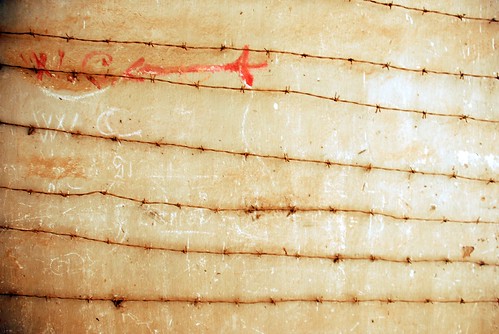
[A middle-age Khmer women walks past the row cells at Tuol Sleng Genocide Museum]
Tuol Sleng was a high school before the Khmer Rouge set up a detention center here in May 1976, and it has been open as a genocide museum since 1980. During its life as a prison and torture center more than 10,000 adults and anywhere up to 2,000 children were processed through it, spending their final days being degraded and tortured before being taken to the Killing Fields outside town to be murdered and interred in mass graves.
The details of what happened there are horrific, a reminder of what happens when a regime dehumanizes its subjects. As we entered we passed the classrooms on the ground floor, which were used as interrogation rooms. The doors are locked, but looking through the windows we could see the steel framed beds, car batteries, and iron clubs that were used to dole out punishment to “enemies of the Khmer state.”

[One of the larger cells at S-21 that housed political prisoners of the Khmer Rouge .]
On the upper levels, as I walked through the tiny brick cells where more important prisoners were held, the crooked walls seemed to close in on me. I was overcome with claustrophobia, fear and the desire to cry at the uselessness of it all. I’d never experienced claustrophobia before. I wanted to flee and gulp down fresh air under the blue sky.

[The frame of Khmer women and her son through the barbwire fences of S-21]
Despite this I was drawn back in. I wanted to see everything that S-21 had to offer. I wanted to try to understand what had gone wrong here.
But at the same time I felt uneasy. Here I was, a relatively wealthy individual visiting a third world country still suffering from the consequences of the very events whose notorious landmarks I was visiting as a tourist.


By the time we got to the three rooms whose walls were lined with photos of the victims I was numb. Looking at the faces of thousands of Cambodian men, women and children I searched for something that might tell me their story. The Khmer Rouge had been meticulous in keeping records of their acts, including these photos of each of their victims, which now act as a chilling reminder that real people suffered and died here.

[Defaced and Graffitized portraits of former Khmer Rouge soldiers on the walls of the Toul Sleng Genocide museum. Even after 20 years many of the Khmer Rouge have not been brought to justice for their war crimes]





